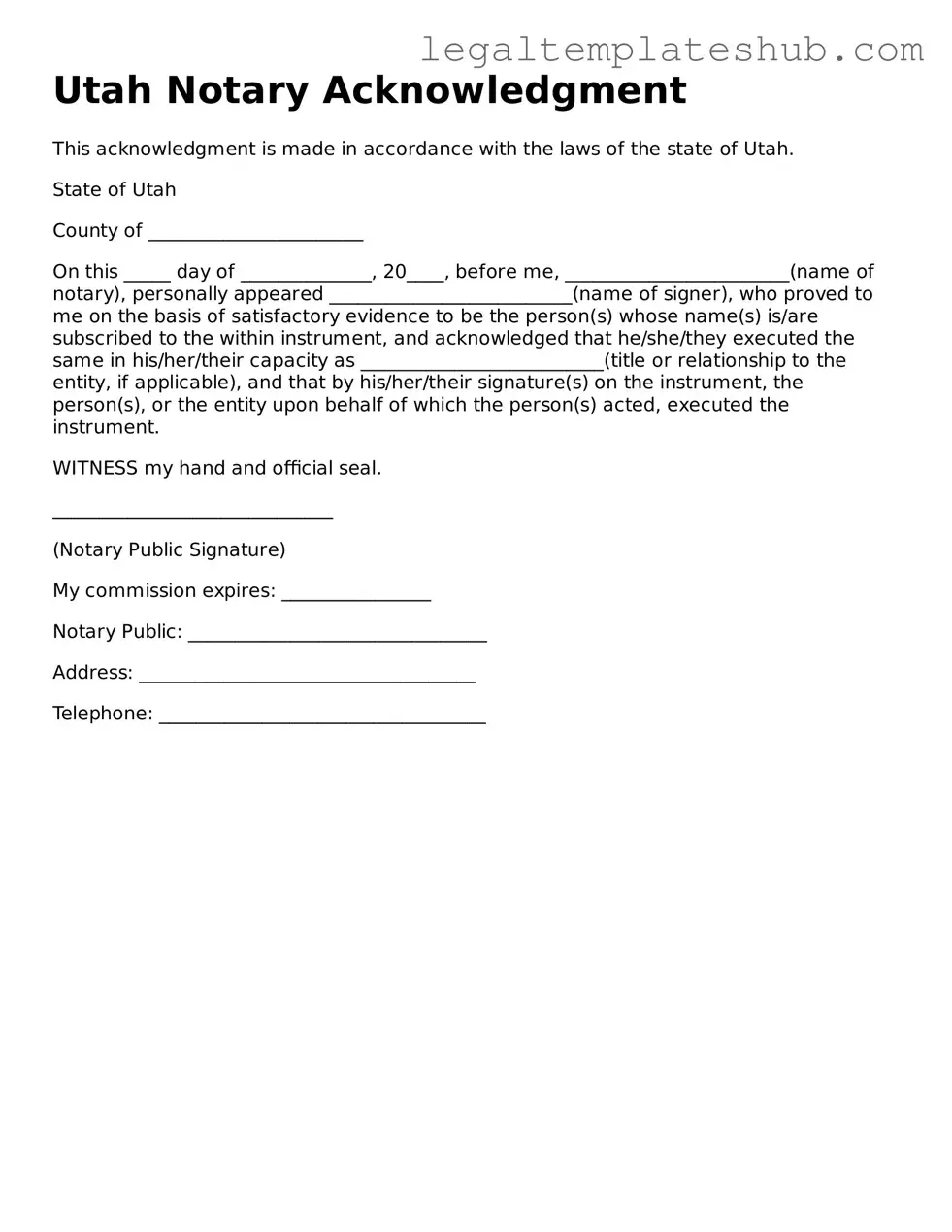Printable Notary Acknowledgement Document for Utah
The Utah Notary Acknowledgement form is a legal document that confirms a person's identity and their willingness to sign a particular document. This form plays a crucial role in ensuring that signatures are authentic and that the signers are acting voluntarily. If you need to complete this process, click the button below to fill out the form.
Access Editor
